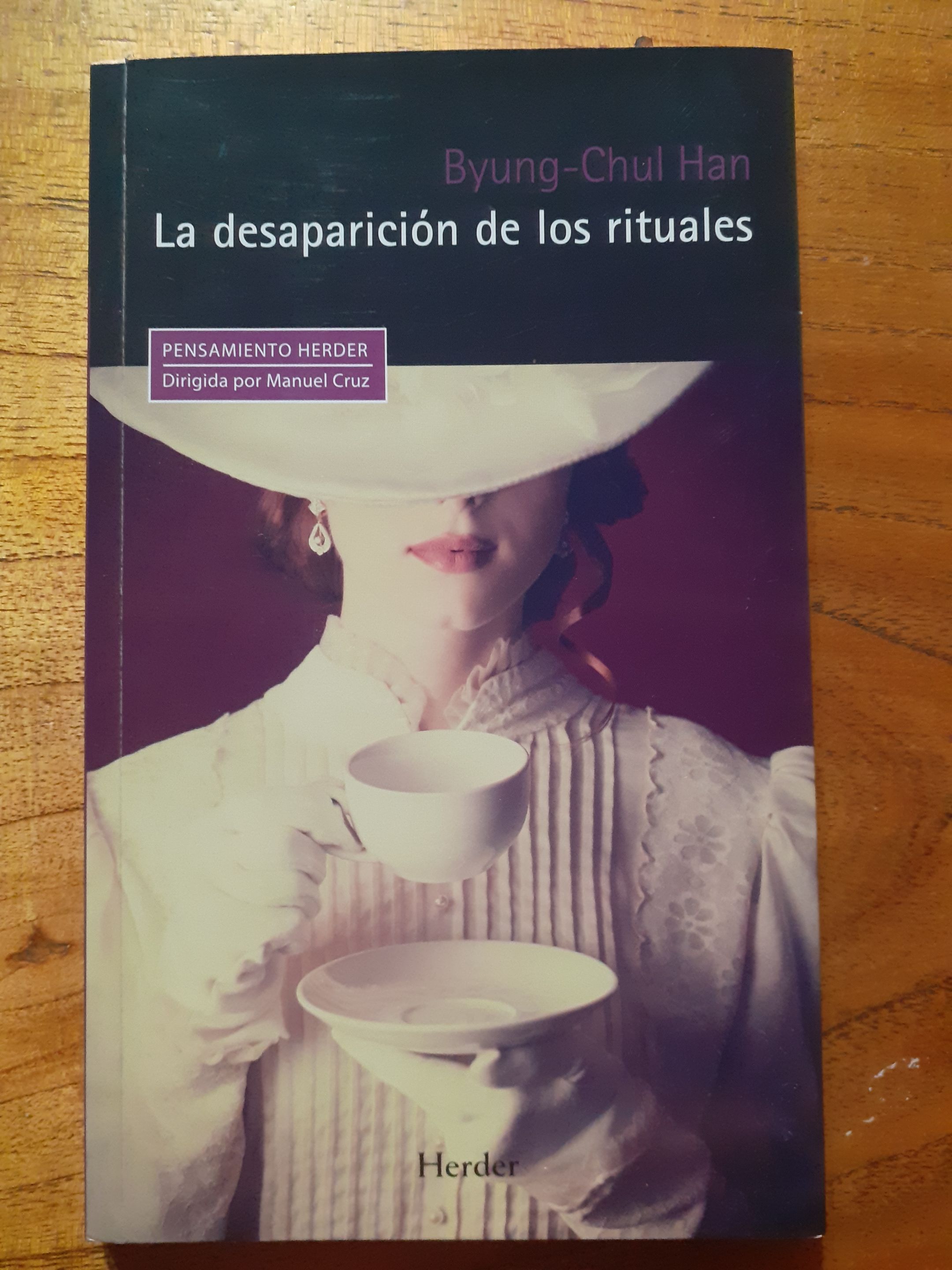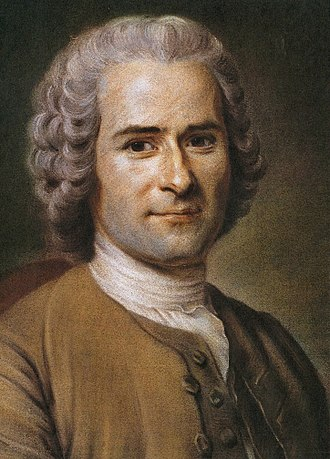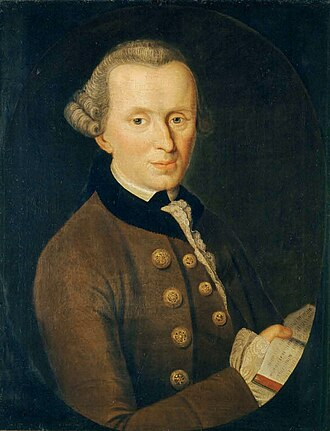
Sherlock Holmes says in The Hound of the Baskervilles that some people, though not brilliant themselves, can sharpen the minds of others. That’s somewhat the effect of this book, the first one I’ve read by the author: it doesn’t make me think he is brilliant, but the topics he addresses, and the way he does it, do stimulate thought—even when I disagree with him.
What drives Han, I hypothesize, is a kind of Rousseauian romanticism—a belief that the neoliberal world (which he never defines, only sprinkles with disconnected remarks) is to blame for the problems he goes on to describe.

On the other hand, his hatred of commas and preference for very short sentences puts me off, as it really hurts the flow of reading.
Having said that, let’s move on to the chapters of the book.
1. Pressure to Produce
The opening words of the first chapter are:
Rituals are symbolic acts. They convey and represent those values and orders that hold a community together. They create community without communication, whereas today, what dominates is communication without community.
What’s missing is symbolic strength—images and metaphors. I suppose he’s referring to what we could broadly call ethos. But I see this as something inevitable in globalization: globalization is not merely a commercial phenomenon but a global clash of ideas that were previously relatively isolated. For each isolated group, some of the ideas of others were mere disconnected anecdotes or only known by the small percentages of academics and travelers. From the clash of ideas that had little communication for a long time arise doubts about former certainties, chaotic or more orderly combinations emerge, and thousands of mini-communities form—both in person and, especially, virtually—connected by very specific things in many cases, sometimes by grand ones like religious conversions.
Rituals bring stability to life, Han says. I’d say that’s both a virtue and a flaw, depending on the degree—especially if, rather than thinking in terms of rituals, we think in terms of habits or customs or routines. Han states the difference is that rituals are more intense, whereas routines are banal. A total order would create stagnation through immobility and suppression of creativity, while total chaos would hinder progress due to the lack of the stability needed to build upon new creations.
Pressure to Be Authentic
In this chapter, it seems the author overlooks the problems of emerging Mr. Hydes, rising neuroticism, and the hypocrisies that occur in what he nostalgically calls the play of forms and theatricality.

Sometimes it's ambiguous whether he's describing a situation, quoting what others think, or stating his own views.
He says developing one’s authentic self isn’t incompatible with taking into account the community one develops in, whereas the prevailing neoliberal regime promotes authenticity and self-realization as forms of exploitation and production.
I’ve never quite understood what people mean when they talk about “self-realization.” Wouldn’t one get bored quickly after achieving it and become “unrealized” again? Han doesn’t use the word “asset,” but I think it fits to say that authenticity, in his conception, is an economic asset.
Eighteenth-century society was still defined by ritual forms of interaction. Public space resembled a stage, a theater. Even the body represented a stage.
In these words and the examples he gives in the full paragraph, Han seems to miss that this was true only for the upper classes, the wealthy. The lower the income, the less time was spent in such theatricalities, which involved a lot of aesthetic status competition and Veblen goods—objects meant to show off wealth and class. Later on, Han does acknowledge that the public sphere, with its conventions, is made of representations and theater (which reminds me of Alfred Schutz’s “lifeworld” and intersubjectivity—concepts first introduced by Edmund Husserl).
I like Han’s point that before the current tattoo craze, tattoos used to signify belonging to a community, whereas now they highlight the individual identity of the tattooed. (I’ve never had a tattoo; I never saw the point unless it was as a mark of belonging to a secret society or something. Besides, getting a tattoo assumes that what matters to you now will matter your whole life—and I find life more unpredictable than that.)
Today the world is no longer a stage where roles are performed and ritual gestures exchanged, but a market where people undress and display themselves.
Again, too simplistic or reductive. Virtual networks may give that impression, but they’re incredibly heterogeneous—even if what draws attention is precisely the nudity and self-display Han mentions. In fact, statistics show that the vast majority of online content is produced by a very small percentage of users. So in reality, it’s only a few who are constantly displaying themselves.
This is what Jakob Nielsen’s “90-9-1 rule” suggests for online communities:
90% of users are passive observers.
9% contribute occasionally.
1% produces the majority of content. [https://universoabierto.org/2018/05/29/el-1-de-los-usuarios-de-redes-sociales-publica-el-90-del-contenido/]
I believe constant self-exhibition is limited to those who gain socioeconomic rewards from it (and even then, I doubt it’s total, except in very rare cases). There’s also learning involved—people adapt based on the reactions they provoke and how they handle them, depending on their personality.
In the physical world, people generally aren’t parading around exposed in the streets either. Beyond fashion, parties, or demonstrations, local customs still have a strong hold on public behavior—and they tend to change gradually, not suddenly.
Closing Rituals
The hell of sameness, the lack of closing rituals and thresholds.
Han says globalization and hyperculture (which he defines as the commercialization of culture) make everything look the same—a violence of sameness that, in turn, breeds the violence of retrotopia (a concept from Bauman), i.e., the desire to return to a prior culture with unique traits, closed to outsiders.
I’d say sameness has strong human natural drives behind it: a convergence of taste, where having similar capacities to choose leads to intra-species similarity, so to speak. Universal narratives—or recurring elements across many stories in many cultures and eras—are a good example. There are things that attract most people, whether consciously or not.
Han makes a good point about constant optimization and sustained performance, though his tone suggests he disapproves and would prefer a more tranquil existence. But it would be wrong to moralize that preference (or the lack of it), because even if the system pushes in that direction, whether it’s good or bad for someone depends on their personality. Just as before modern capitalism, some personalities thrived and others didn’t.
Think of someone like Sherlock Holmes: "My mind rebels at stagnation." Or the adventurous spirit at the start of Beauty and the Beast: “I want much more than this provincial life. I want adventure in the great wide somewhere!” etc.
https://www.youtube.com/watch?v=dPTKl5H5ftg
Finally, on the lack of ritual thresholds: crossing a concrete threshold can be a push, a spark—“from now on I must do these things and stop doing those.” But the arbitrary nature of such thresholds would annoy me. For example, the idiotic ritual that Boca Juniors used to do for years: shaving or badly cutting the hair of rookies in their first pre-season with the senior team. What a stupid ritual, what sadistic aggression, what pathetic tribalism.
Celebration and Religion
Han begins by saying that God’s rest on the seventh day in the Judeo-Christian creation myth was, within the myth, a necessary activity to complete the universe—that inactivity itself completed it. From there, he magically deduces that stillness is God’s essence (what about the other six days and everything else God does in the Bible?). And that since this is the essence of God, humans will never attain the divine if we subordinate rest to work—treating it as recovery rather than as a moment of pure stillness or revitalizing celebration.
He writes:
Rest belongs to the realm of the sacred. Work, by contrast, is a profane activity that must be entirely omitted during religious acts.
He says subordinating rest to work strips rest of its “ontological surplus value” and thus profanes and degrades life.
Does Byung-Chul Han feel profaned and degraded when he rests? His rests can’t be very restorative.
He does make a good point that in celebration, the perception of time and emotional attachment to its passage change—since in a true celebration there’s nowhere to go: being in it is what occupies attention. He also notes that modern parties have become event management, and that when events are massive, no real sense of community is formed:
Festivals are mass events. Masses do not constitute a community.
He also slips into a kind of Nirvana fallacy (or something close) when he criticizes that university education is now instruction and not formation; that education is no longer an end in itself but a means of increasing human capital.
For all these reasons, he rejects the idea that capitalism is a religion, since it lacks the “power to gather and unite,” has no contemplative calm, and doesn’t distinguish between sacred and profane things. He similarly contrasts tourists with pilgrims.
Life-or-Death Play
The neoliberal subject, who is forced to perform, is an absolute servant because, without a master, he voluntarily exploits himself.
Either that oxymoronic phrase is nonsense, or I’m outside Han’s theoretical paradigm and don’t understand it. What does it mean to exploit oneself? Wasn’t exploitation about one person coercively taking advantage of another?
Then he says something else absurd (I think I’m running out of patience with this author) about how we find ancient deadly rituals shocking. He says it’s because they “embody a form of life based on the squandering of energy and on play.”
No—it’s shocking because of the squandering of lives, especially if, as the fragment he quotes implies, there’s no way to succeed in the supposed purpose of the ritual, and it guarantees a participant’s death. That sounds more like suicide for the sole purpose of “proving” the victims’ bravery.
He praises (or seems to) life-risking games as expressions of extreme strength, vitality, and pleasure, and criticizes how society, in his view, now values life as the ultimate good (as if no one were willing to give their life—or years of it—for causes they find just or moral). Just days before I read this chapter, a man named Franco Toro died after jumping into the water to save a woman, as did two other men who survived. His absolute value wasn’t his own survival—he would’ve stayed on shore otherwise—but trying to save someone else.
Han also speaks positively about what he calls sovereign suicide—not that of someone depressed, but of someone at the peak of pleasure who kills himself as a rebellion against the system.
“Today, living means nothing other than producing,” Han says. Is that a confession about his own life that he wants to change? Most people don’t produce just to produce, unless, like in a Zen proverb, “a master in the art of living makes no distinction between his work and his play; to him, it always seems he’s doing both.”
End of History
This chapter, the shortest one, is a brief digression that continues the previous reflection on play and sovereignty, now relating them to work as the center of modernity. It contrasts this with Paul Lafargue and his The Right to Be Lazy, as well as with an old Greek view that denigrated labor—something bad, done only by slaves. This leads to the idea that the end of history will come when work ceases and everything becomes art, love, and play. For this, Han quotes Alexandre Kojève, but then notes that Kojève changed his mind about the end of history after visiting Japan and witnessing its upcoming reign of rituals.
Empire of Signs
In this chapter, there are some sharp observations along with others that are attempts at sharpness.
He starts with the empirical claim that we increasingly stop using playful language, putting language to work instead. But it’s hard to grasp what he means by this "empirical" assertion. I suspect he doesn't use social media, which might explain why he misses the abundance of playful language there—though he’d probably deny its playfulness and say it's working for popularity instead.
He speaks at length here about the excess of signifiers, praising what this concept refers to—especially signifiers without signifieds (which is a contradiction, semiotically speaking). He praises empty forms, once again invoking Japan’s ritualistic society. But he's wrong when he speaks of the pleasures of pure forms, of pure signifiers: the meaning of things he claims are empty actually arises from the relationship between signifiers, not from isolated signifiers (which, as I’ve pointed out, makes no semiotic sense except as a method of analysis). But Han talks a lot here about empty signs.
He seems to desire the disappearance of the self through a set of rituals which, according to him, empty out the psyche when performed. This, he argues—and not because of any ethical sense—is why he laments the decline of courtesy in the name of authenticity. According to him, the Japanese tea ceremony causes psychological voiding and self-forgetting, and no communication occurs during it. That’s a serious error. Of course something is communicated: the desire for coordination with the other person, or simply to share an activity, or perhaps just to show that one knows how to perform it, such as to demonstrate being a worthy vessel of tradition. And, in the movie Karate Kid 2, performing the tea ceremony means "I like you/ I'm in love with you"

Another error: he opposes ritualized, agreed-upon rules to moral laws. He calls courtesy pure form without moral content. But as Henry Hazlitt would say, courtesy is made of minor morals. Certainly, there are fossilized behaviors that continue merely out of fear of breaking custom, but the aim of courtesy is to ensure others feel comfortable—or at least not uncomfortable—or, failing that, to fulfill a self-imposed moral duty regarding how one ought to treat others. In sum, courtesy, in its many possible forms, does have a moral background.
From Duel to Drone Warfare
This chapter addresses a certain playful aspect—seen in rituals—of duels and even wars: in both cases, Han refers to the reciprocity, equality, and symmetry between opponents, the recognition of equal rights between them, and the establishment of rules of engagement, all of which serve to reduce or limit total violence.

In contrast, in modern warfare—since the invention of aircraft and especially with the rise of drones—this aspect fades away. Wars increasingly become exterminations, as in so-called military operations. The enemy ceases to be a moral equal or someone to respect, and instead becomes a criminal to be eliminated.
“[98] The adversary as a criminal to be annihilated is nothing more than a sum of data. Drone warfare is the dataism of slaughter.”
Han doesn’t mention the concept of asymmetric warfare, but what he describes is related. Instead, he uses a Marxist thesis—or something close—on wars as products of capitalist overproduction and surplus, claiming that modern wars are production battles. Well, obviously, arms production is key—but it always has been. All wars have a technological component. Something as basic as stirrups was once a crucial military invention, as were horse-mounted archery and countless improvements in weapons and armor over the centuries.
Han fails to define specific times and places for these ludic ritualistic wars. There was no Golden Age in which war was purely playful ritual, free of extermination or asymmetry—or if there was, we’d need exact coordinates, not some mythical past like those social contract fairy tales justifying the existence of states.
From Myth to Dataism
This essay felt bland to me. Han says that early philosophy had a playful quality, with riddles and dialogical duels, until Plato brought a major shift, prioritizing truth over playful myth and criticizing the Sophists, who were devoted to play.

Han claims that Kant subjected play to labor, and beauty to usefulness, even despising music for being useless entertainment. For Kant, one mustn’t play just for play’s sake—one must produce knowledge. Han argues that while in the Kantian paradigm the subject is the producer of knowledge, today a new paradigm is emerging: dataism. With the advent of big data, the calculating power of computers and algorithms takes growing precedence, reducing narrative:
The shift from myth to dataism is the shift from storytelling to mere numbering. Dataism makes the production of knowledge pornographic. Thinking is more erotic than computing.
From Seduction to Pornography
Han says seduction is playful and belongs to the realm of ritual, whereas sex belongs to the realm of functionality. In seduction, power shouldn't be seen as oppressive or evil—it’s erotic, and it’s played out reciprocally. But in pornography, playfulness is absent; its pleasure is narcissistic, it eliminates seduction and the other, and its production, with an excess of sex in contrast to past scarcity due to social repression, destroys sexuality—ushering in a post-sexual era.
He also claims reading has become pornographic, because non-poetic texts reveal truth transparently (though that really depends on the book—there's no shortage of unclear ones). Still,
We hardly read poems anymore
he says, praising them for their imprecision and opposition to the production of meaning. I’m not sure what he means by “we hardly read poems anymore,” as if poetry were ever a mass phenomenon—which I highly doubt, unless one counts the poetic parts of religious texts, though I doubt that’s what he’s referring to.
Personally, I haven’t found much enjoyment in the few poems I’ve read—except when they’re part of a story and mean something to a character or the story itself, such as when A Poison Tree by William Blake was used for the trailer of the fourth season of The Originals:
https://www.youtube.com/watch?v=K57Q7f6FHuc
Then again, songs can be interpreted as poems, and there are many I really like—both lyrically and musically. Maybe they wouldn’t get high poetic marks from non-musical poets, but take a look at Unlimited by Aikawa Nanase (the full version of the Samurai 7 opening theme)—isn’t that practically a great p